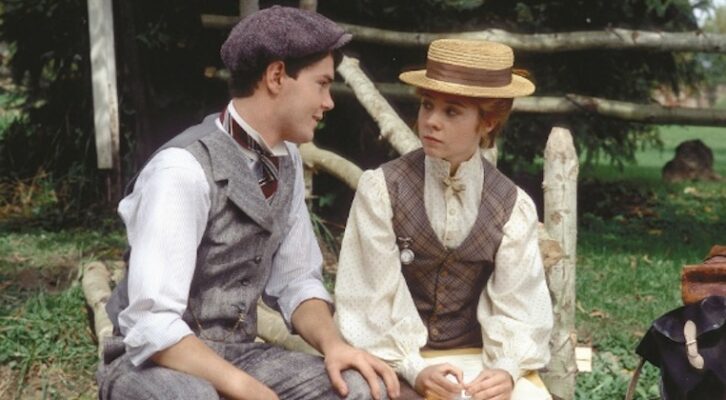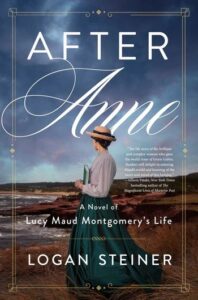
Logan Steiner on Learning Life Lessons From Anne of Green Gables
“Anne continues to help me see how much more possibility exists in the world for unbridled expression.”
Nostalgia for Anne of Green Gables runs deep. For me, it traces back to a small Iowa town where I spent long summer days with my grandparents. There, always, was Anne. I read the books for the first time in my grandparents’ house. We watched the Megan Follows CBC series together countless times.
Eleven years old at the start of Anne of Green Gables, Anne lived life unfiltered. She spoke her mind and dreams and pains out loud to the people in her life, and it got her in trouble, but it endeared her to them too. She was verbose in the most charming of ways. “People laugh at me because I use big words,” she said. “But if you have big ideas, you have to use big words to express them, haven’t you?”
Anne’s perpetual failure to “hold her tongue” was one I could relate to as a young girl. But I quickly learned how to hold my tongue too well, and as an adult, I’ve had to coax myself to open up more. Anne continues to help me see how much more possibility exists in the world for unbridled expression.
What can we learn from Maud’s life and the character she created in Anne?
The early Anne was also daring and headstrong in her ambitions and relationships. She knew what she wanted and went after it—whether a bosom friend or a published story. Anne’s character was largely responsible for my own dreams of writing books one day.
So many of us have a story about how Anne has stayed with us over the years. “She made me fall in love with reading.” “She made me believe I could make something of my life.“ “No other character ever had the same hold on me.” “I still have an Anne hat in my closet at home that I got when I was young.”
But it’s not just nostalgia that draws us to Anne. Why her, of all the young adult characters in fiction? Why has she had such staying power—generating several CBC series and gaining many new fans through the recent three-season series on Netflix, Anne with an E?
As the saying goes, “People will never forget how you made them feel.” Reading Anne of Green Gables when I was young and reading it again now, Anne’s character stirs up a consistent feeling in me: the joy that comes on days when I tap into the best of life’s energy, coupled with my own freedom to unleash it. Becoming an adult complicates matters. As Anne herself said, “It’s all very well to read about sorrows and imagine yourself living through them heroically, but it’s not so nice when you really come to have them, is it?”
Anne’s creator, Lucy Maud Montgomery (who went by Maud), shared Anne’s unfiltered, exuberant spirit as a young girl. But Maud’s mother died when she was almost 2, and her father left her to be raised by strict Scottish grandparents. Living with her grandparents trained much of Maud’s exuberance out of her. Her fiction became the outlet for her joyous spirit—and a vastly successful one—with Anne serving as an alter ego of sorts for many of Maud’s deepest feelings.
In sometimes startling contrast with the happy endings of her fiction, Maud would spend her adult life struggling with the bind of what to make public and what to keep private while facing a large dose of life’s sorrows. After losing her closest friend in middle age and facing the onset of her reverend husband’s mental illness, she started keeping her struggles especially close to the vest. Her journals were a refuge and a thing of beauty, but even those she curated for eventual publication.
Questions about how much and what to keep private pervade our society today. Social media means that nearly all of us now face the same challenges that only public figures like Maud used to face. There is a pureness in the desire to live life out in the open, as Anne did. But Anne was not a public figure. Revealing ourselves in an unfiltered way to countless strangers on social media exposes us to hurt we may not be prepared for. What’s the right balance to strike? What can we learn from Maud’s life and the character she created in Anne?
In my own journey with social media, I’ve historically erred on the side of privacy. I deactivated my accounts for years. But I’ve recently reengaged with social media platforms to build my public-facing author presence, and the question of how much to share has been front of mind.
From Anne, I’ve learned to share—through interviews and newsletter posts—my real self underneath the still photos that adorn these platforms. I share Anne’s deep sensitivity and love of books and penchant for disappointment. Sharing my real self means being vulnerable about the highs and lows of my long path to becoming an author, as well as sharing my even longer path to becoming a mother that is bound up with my author journey and the characters I created along the way. I don’t want to decide what parts to hide and what parts to reveal based on whether something was painful. Touching pain means touching what matters to me and what has moved me forward.
From Anne and Maud together, I have learned to err on the side of filtering less and trusting myself more.
There are things I am still feeling through that I am not ready to write about yet. But I have learned from Maud’s journey to find trusted people to share those with as well.
From Anne and Maud together, I have learned to err on the side of filtering less and trusting myself more.
It is easier to filter less and trust more when we are young and reckless or old and accepting. Old and young people don’t have to school themselves to “let go” of what people might think in the next moment because they spend more time living in this one.
This is why Maud liked writing characters in young and old age, and became bored of her characters—even Anne—when they reached middle age. Maud’s boredom may have shone through in her creation. Anne never became the writer she’d once dreamed of becoming. She married and raised six children instead. She did, however, find the happiness in life that often eluded Maud.
Anne of Green Gables is filled with old and young characters of the best sort, with Anne the best of all. My years spent learning about Maud’s life only made me appreciate Anne more. Her story is often read by young adults, but we may need her most of all in middle life. Re-reading her story now, I feel an immediate uplift in my spirits and the freedom to say exactly what I mean. The deeper I need to go to tap that well, the more crucial it is to tap.
__________________________________

After Anne: A Novel of Lucy Maud Montgomery’s Life by Logan Steiner is available from William Morrow, an imprint of HarperCollins Publishers.
Logan Steiner
Logan Steiner is a litigator and brief-writing specialist at a boutique law firm. She graduated summa cum laude from Pomona College and cum laude from Harvard Law School. She lives in Denver with her husband and daughter. After Anne is her first novel.



















